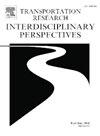Exploring the operator experience in automated shuttles: Fatigue, attention, and gaze behaviour
IF 3.9
Q2 TRANSPORTATION
Transportation Research Interdisciplinary Perspectives
Pub Date : 2025-01-01
DOI:10.1016/j.trip.2025.101332
引用次数: 0
Abstract
Automated shuttles provide a first look at future transportation, however, they still require on-board human operators for regulatory compliance and safety assurance. This paper examines the experiences of eight shuttle operators through two studies. The aim was to investigate their alertness throughout their working shifts. Study A used a controlled experimental methodology to compare fatigue and gaze behaviour at complex road sections during the first and last hours of one shift. Study B involved naturalistic observations over two months, examining sleep, sleepiness and stress.
Study B found that 27% of work shifts occurred following less than six hours of sleep. However, only 1% of shifts resulted in a Karolinska Sleepiness Score of 7 or higher, suggesting that insufficient sleep was rare. Stress was also infrequently reported. Notable individual differences suggested the potential value of personalized approaches to fatigue management. Study A revealed that while overall alertness was generally adequate, gaze patterns often deviated from safe expectations. Operators paid less attention to their surroundings than would be expected (21% not looking left, 38% not looking right, 58% not looking to the rear of the vehicle, in situations where this would have been appropriate).
The results are important for safety operators and their employers, highlighting the shared responsibility of having well-prepared and well-rested operators who are fit to effectively monitor the automated shuttle for an entire driving period. Further research is needed to develop effective strategies to maintain operators’ situational awareness over time, especially as their confidence in the vehicles’ capabilities increases.
求助全文
约1分钟内获得全文
求助全文
来源期刊

Transportation Research Interdisciplinary Perspectives
Engineering-Automotive Engineering
CiteScore
12.90
自引率
0.00%
发文量
185
审稿时长
22 weeks
 求助内容:
求助内容: 应助结果提醒方式:
应助结果提醒方式:


